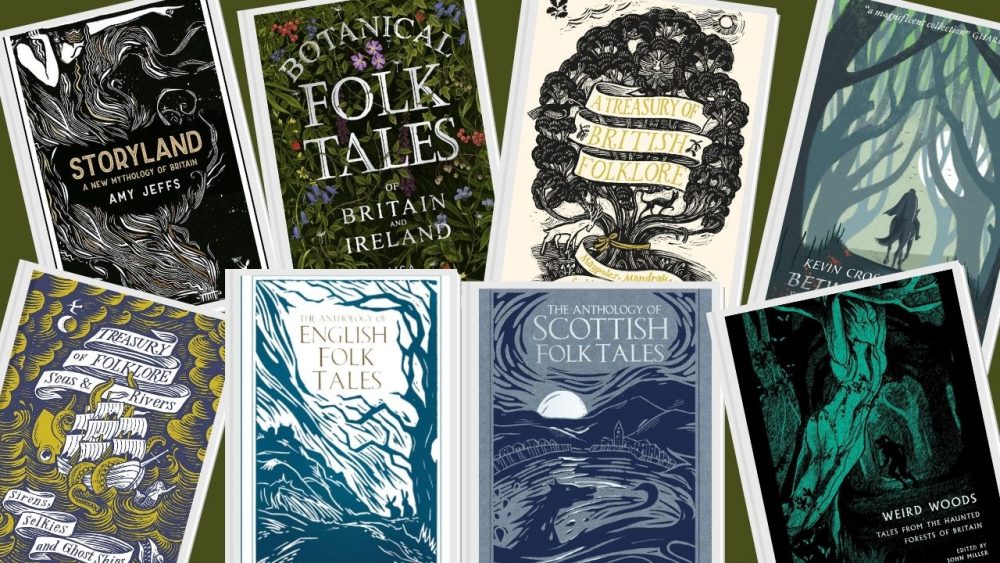Manga is appreciated by many for its endless range of genres, stunning art, and imaginative stories, but it can be difficult to find a manga that isn’t guilty of objectifying and stereotyping female characters. Shounen manga often depicts women with ridiculously large breasts and tiny waits, shown from revealing angles through the male gaze, or as sickeningly cute and child-like, idealised as innocent and vulnerable.
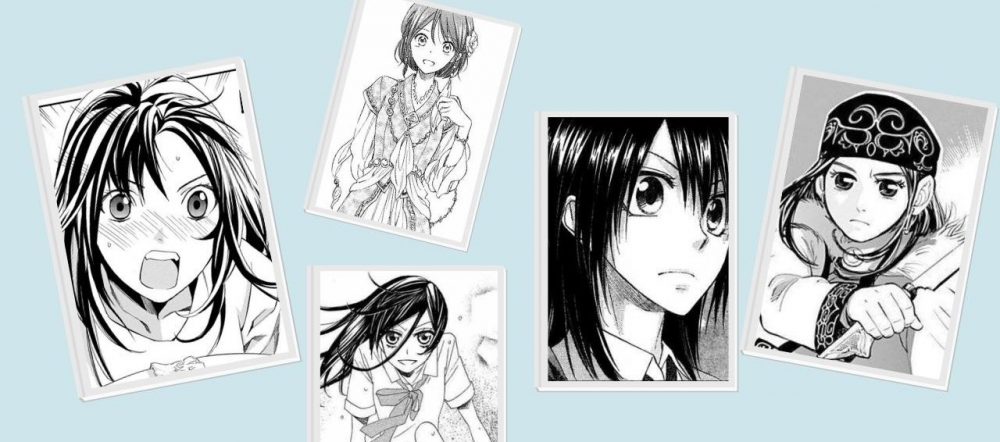
They’re often characterised as either weak, submissive, damsels in distress, or aggressive, powerful, ‘strong’ women that nevertheless still rely on men.
Fairy Tail is a prime example, with the main female characters, Lucy and Erza, blatantly sexualised throughout the series; the unnecessary tearing of their clothes during combat, leaving them virtually naked, doesn’t present them as great warriors who are integral to the plot, but simply objects of pleasure for the male reader.
Shoujo manga may not sexualise female characters, but they’re still objectified through similar unrealistic beauty standards and passive, docile characterisation, subservient to their abusive boyfriends and romanticising toxic relationships.
Even female characters deemed as ‘strong women’ lack the same development and complexity given to male protagonists.
Attack on Titan’s Mikasa Ackerman, for example, is smart, respected, and an incredibly skilled fighter. However, she doesn’t possess any individual qualities or motivations that don’t revolve around Eren, the male protagonist and her unrequited love.
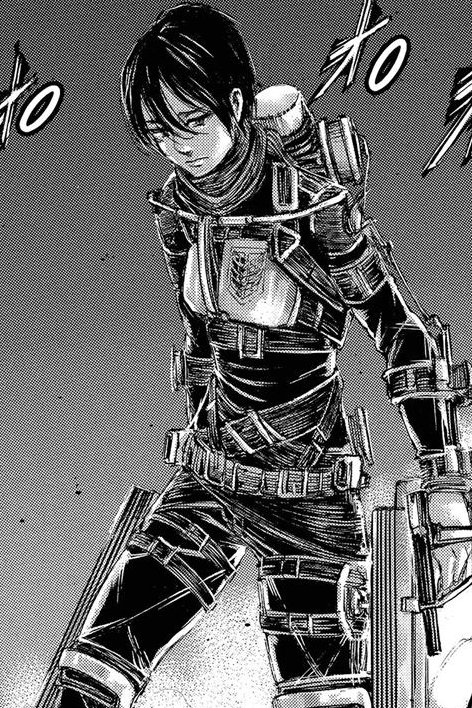
Her strength is not used for her own will but to serve as an advantage to Eren and further his story, leaving her a bland side-character with little development.
Giving a female character ‘masculine’ traits and features doesn’t mean they’re ‘strong’, a term never used to describe male characters, it simply continues to perpetuate the stereotype that by default women are pathetic and fragile, rather than complex, intelligent human beings.
While many mangas, whether marketed for men or women, can be criticized for their degrading depiction of female characters, some seek to reject and challenge this misogyny and objectification.
These mangas are by no means perfect and occasionally feature gender stereotypes and problematic character traits, but they nevertheless offer an awareness of the discrimination suffered by women and are progressive in their effort to subvert harmful societal norms and prejudices. So, if you’re looking for a manga with a dimensional, compelling, and self-willed female protagonist, here are five.
Read More: 10 Best Anime for Beginners
Nikaido — Dorohedoro by Q Hayashida
Dorohedoro is a gnarly and punk manga; a freaky tale set in a post-apocalyptic and lawless set of worlds. In one of these worlds, Caiman is a man with a lizard head and no memory of how his body was twisted, nor by whom. Caiman hunts down sorcerers with the hope of finding the one that must have done this to him. Helping him on this vengeful quest is a woman who, at first, is nothing more than Caiman’s sidekick.

Nikaido is a layer cake of surprises, however. She is introduced to us as a scrappy, capable fighter who has decided to follow Caiman on his half-mad journey for no other reason than this: she wants to. And this is the first detail that makes Nikaido such a fun self-willed female protagonist.
Dorohedoro is, primarily, Caiman’s journey, but Nikaido is there by his side because she wants to be. She is interested in his struggle and feels for him. She also enjoys fighting; she enjoys getting into scraps with sorcerers, and she’s good at it.
Nikaido is a hilarious protagonist. Witty, warm-hearted, sadistic to a point, hungry for violence, and rarely deterred by the hurdles she faces. She’s the psychopath’s answer to Dragon Ball‘s Goku and we stan her. Far more than many other characters, male or female, Nikaido is capable and tough. She has a can-do attitude when it comes to violence that adds layers to her humour as a female manga protagonist as well.
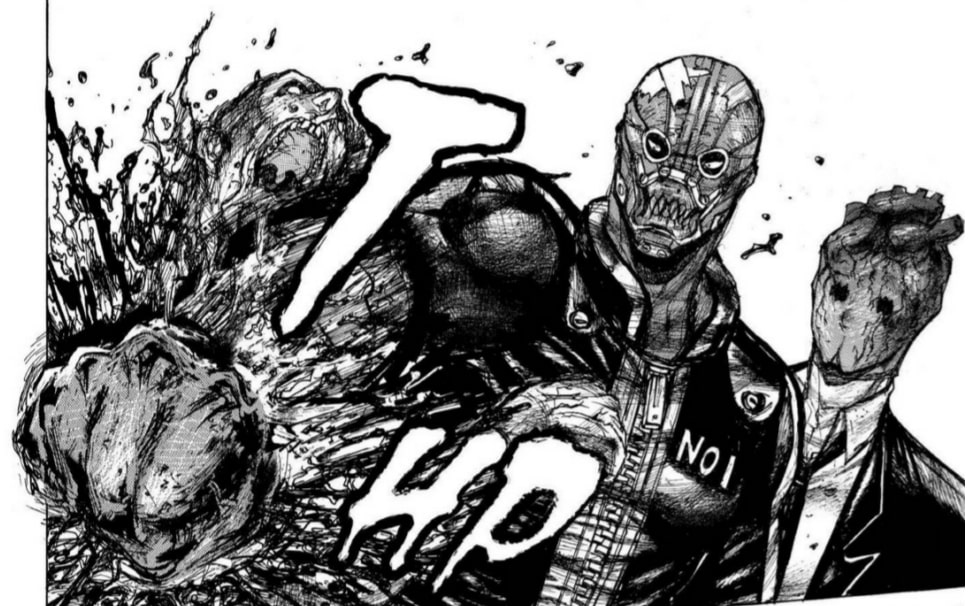
While we’re here, it’s also worth shining a spotlight on Noi. Noi is one half of a pair of villainous sorcerers with a Mulder-and-Scully vibe (or Hazel and Cha Cha from Umbrella Academy). Both are larger-than-life, murderous, brutal, and terrifying, but Noi is the bigger and badder of the two.
Q Hayashida has paid extra attention to her female protagonists and antagonists alike, giving them the comedy roles every time. Her women are her comedians, as well as her brawlers and blood-thirsty fighters. Her men are pig-headed vendetta-seeking creatures, but it’s her women who have big hearts and bigger fists.
Hiyori Iki — Noragami by Adachitoka
Noragami, or Stray God, is a fantasy shounen manga that tells the story of unknown, homeless god, Yato, and mortal school girl, Hiyori. Their fates become intertwined one day when Hiyori saves Yato from being hit by a bus, taking the impact herself and causing her spirit to detach from her body.

Like many shounen mangas, the story focuses mainly on the male protagonist, but Hiyori is never presented as subordinate to Yato, instead she is the catalyst for the action and given a strong, prominent voice throughout the series that isn’t made to feel secondary.
Hiyori is a defiant, tenacious, and selfless character, challenging typical shounen tropes and limiting gender roles. Her secret love for professional martial arts, something deemed ‘unfeminine’ by her parents and friends, reveals her desire to break free from stereotypes and societal pressure to conform.
Her spirit form provides her with the freedom and strength to practice her martial arts, to express herself and escape restrictive gender norms. Throughout the series, Hiyori repeatedly saves Yato and other characters and is shown gratitude and respect in return, subverting the common passive, damsel in distress trope.
Though she loves a good fight, Hiyori is never depicted as an emotionless ‘strong’ woman either, but is continuously kind and compassionate, risking herself to rescue those she cares about and providing them with emotional support. Yato may be a powerful god, but Hiyori is never shown as subservient to him; it is clear throughout the series that he needs her just as much as she needs him, forming an unbreakable bond that is built on friendship and trust.
When Hiyori learns of Yato’s dark past, revealed later as an abusive one too, she doesn’t run away but displays courage and sincerity, inspiring him to one day become a god of fortune instead of calamity.
The series also features a range of other significant female characters, such as the god of war, Bishamonten, and god of poverty, Koufuku, who are the heads of their households and wield great power, subverting the traditional depictions of the Shinto gods as male. Although the manga includes a variety of compelling, complex female characters, the sexualisation of women in shounen manga seems unfortunately inevitable.
However, Adachitoka (a combined pen-name for two female artists) makes sure that these instances of sexualisation are rare and that the women aren’t treated as passive objects of lust for male consumption, still enticing the male target audience without making female readers uncomfortable.
If you’re searching for a manga filled with fantasy, action, humour, and incredible character development, while challenging diminishing female tropes, then I really recommend the seriously underrated Noragami.
Hori-san — Horimiya by Hiroki Adachi
Horimiya is one of the most popular and beloved romance manga of today, and was adapted into a faithful anime that has actually improved upon some of the manga’s iffier parts. Horimiya is not without its problems (which we’ll get to) but it’s hard to argue the fact that the titular Hori-san is a strong female lead indeed.
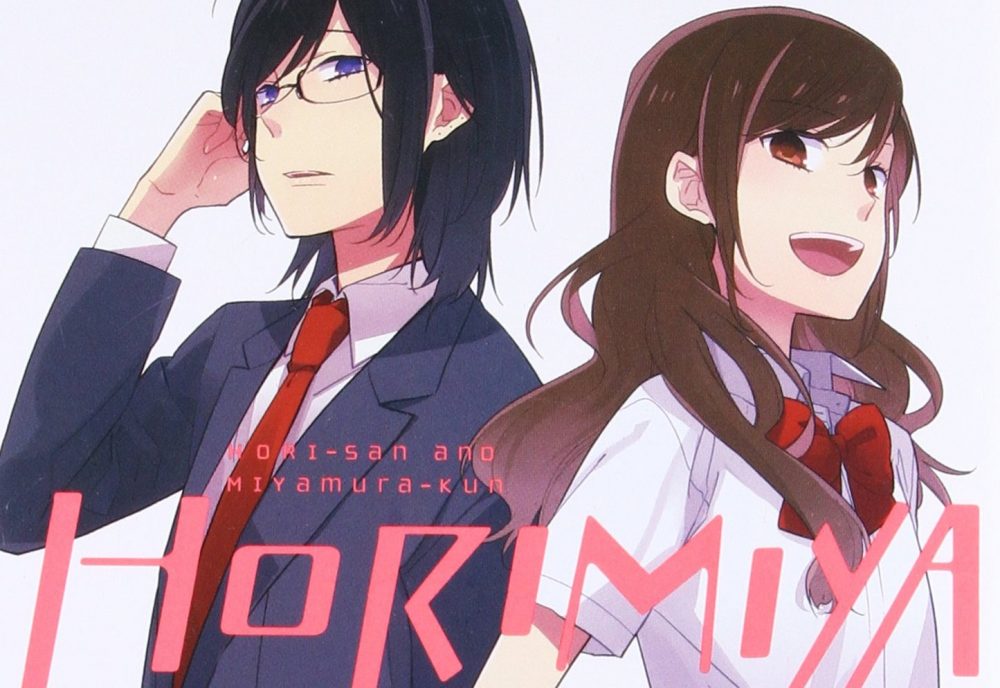
Horimiya is a refreshing teen romance story that centres on the titular Kyoko Hori and Izumi Miyamura, two high school classmates who quickly fall in love.
Hori-san is a popular honour student with a hidden home life: she raises her little brother and manages the home because her parents are “busy”. Miyamura-kun plays the introverted and lonely otaku at school but is, in actual fact, a sexy, tattooed, and pierced himbo.
Until the story’s beginning, Hori and Miyamura have never spoken. He keeps a low profile by design and her heavy responsibilities keep her from noticing other people. It’s their secrets, which are quickly exposed to the other, which form a bond between them.
Miyamura begins to spend every evening after school at Hori’s home. He brings cake from his family’s bakery and he helps her raise her adorable little brother. The two confide in one another, letting their guards down and letting the other one see their true colours.
This is a lovely enough setup for a romantic comedy manga, but where it stands out is in the dynamic between the two leads. Hori-san is a very stubborn, strong-willed, self-assured character. This is often played for laughs but it is still refreshing to see such a confident teen girl in a romantic comedy.
Too often the role she occupies is played by a meek, bright-eyed young romantic. Not here. Hori-san is lacking in elegance and has high expectations for her friends, family, and self.
The downside to her character is that she makes jokes and comments that can easily be considered homophobic and transphobic. This kind of punching down comedy is lazy and isn’t the kind of thing we stand for. These jokes are rare and can be overlooked to a point, but they certainly do tarnish an otherwise respectable manga character.
Nanami Momozono — Kamisama Hajimemashita by Julietta Suzuki
Kamisama Hajimemashita, or Kamisama Kiss, is a supernatural romance shoujo manga about high school student, Nanami, who is evicted from her home by debt collectors due to her father’s gambling.
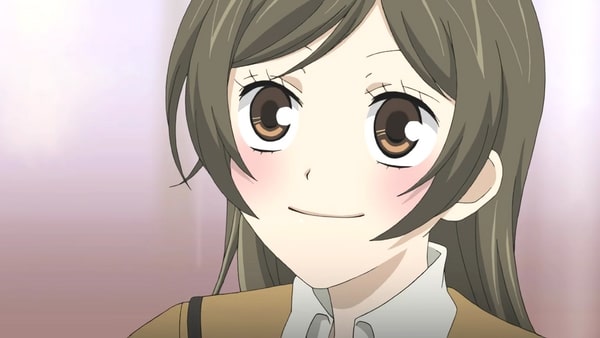
Homeless and alone, she comes across a man being chased by a dog, who rewards her for saving him by giving her his home. However, the house is actually a shrine, home to Earth Deity Mikage and his familiar, Tomoe. Nanami must now work hard as the new deity of the shrine and earn the trust of Tomoe, who she begins to fall in love with.
Shoujo manga frequently features submissive, weak girls who have little interest in anything besides boys and relationships. Nanami, however, is hardworking, strong-willed, and optimistic, even after facing hardship, abandonment, and loneliness in her past.
The series is light-hearted in tone and Nanami can be portrayed as the typical ‘cute, clumsy girl in need of protection’ at times, but she’s never totally reliant on others and always makes an effort to save herself.
Nanami is true to her beliefs, and whatever she may lack in skill or strength, she makes up for in her positive mindset, offering gods and yokais alternative perspectives and solutions to their problems while encouraging them to change their wicked ways.
The power dynamic between Nanami and Tomoe constantly changes throughout the series; Nanami is a deity and therefore master of the shrine while Tomoe is contracted as her guardian and familiar.
The power shifts towards Tomoe in terms of their romantic relationship though, as he believes that yokai and humans can never be together, therefore leaving it up to him to initiate any romance after Nanami has confessed her feelings.
However, the manga places emphasis on Nanami and Tomoe’s ability to work together in order to overcome obstacles and grow stronger as individuals.
As Nanami gains confidence, knowledge, and power, able to perform purifications and banish evil yokai, Tomoe learns to be more emotionally vulnerable and trust Nanami, not just romantically, but as a master who will not abandon him like Mikage.
Tomoe could easily be described as a ‘tsundere’, a Japanese term often associated with female characters who are initially cold but gradually reveal a warmer, friendlier side. His behaviour towards Nanami is cruel and harsh at times, but as the story progresses and readers learn about the difficult past that lies behind his cold demeanour, his behaviour is more understandable.
Although this is no excuse for his patronizing treatment of Nanami, Suzuki provides his character with complexity and depth that deviates from the one-dimensional ‘bad boy’ stereotype. Nanami helps to break down his emotional walls and they both teach each other valuable lessons, their love gradually blossoming into something that defies the toxic relationships shown in so many shoujo mangas.
Read More: 11 Best Manga for Beginners
Misaki Ayuzawa — Maid-sama by Hiro Fujiawara
Maid-sama, or Kaichou wa Meido-sama, is a romantic-comedy shoujo manga about Misaki, the first female student council president of the predominantly male school, Seika High.

Despite her tough, dominant reputation at school, she secretly works part-time as a subservient maid at a cosplay maid café in order to support her family who have been abandoned by their father. Her secret is accidentally discovered one day by Usui Takami, a popular boy at her school, who takes an interest in her and becomes a regular at the café, much to her dismay.
This manga is similar to Kamisama Hajimemashita in its light-hearted tone, themes of loneliness and trust, and lead tsundere character. Like Tomoe, there is little justification for Misaki’s misandry, but her growth and development throughout the series is admirable.
She is extremely ambitious, assertive, and determined, aware of the discrimination women face and unafraid to speak up for what she believes in and protect people who need her. The contrast between her two worlds as school president and maid highlights Misaki’s internal struggle with her femininity and the limiting societal depiction of women.
As president, she is resented by the male students who see her as stubborn, bossy, and a demon dictator, but as a submissive maid she is adored and idolised by men.
Throughout the series, Misaki learns that she doesn’t need to conform to the restrictive ‘feminine’ standards placed on women, nor does she need to behave in a ‘masculine’ manner to be a capable leader.
If you’re looking for a slice-of-life that’s light, funny, and romantic, with a compelling, badass female lead, then Kamisama Hajimemashita and Maid-Sama are both perfect.
It becomes clear throughout the series that the person Misaki is hardest on is, in fact, herself. People constantly rely on Misaki at home, school, and work, and her determination and perfectionism can often cause her to overwork, impacting her mental health.
Usui is the first person to truly understand and care about Misaki; he helps her to overcome her trust issues and provides her with emotional healing, kindness, and dependability.
As their relationship develops, Misaki becomes better at compromising and relinquishing control while still sustaining her ambition and self-will, acknowledging that it’s okay to ask for help sometimes. Usui frequently tries to rescue Misaki, but she makes it clear that she is completely capable of saving herself.
When kidnapped by two creepy men, Misaki utilises her extensive aikido training to break free and berate the men for ignoring women’s rights and personal boundaries in pursuit of their selfish sexual fantasies. Usui comes to understand that while Misaki needs support, she doesn’t need to be doted on constantly and should never be underestimated because she is a woman.
Through these realisations, Misaki and Usui establish a deep relationship over time that is built on openness and respect, learning to love each other for their individuality and unconventional personalities.
Riko — Made in Abyss by Akihito Tsukushi
Made in Abyss is a manga that’s as famous as it is because of its staggeringly beautiful anime adaptation, which is absolutely worth watching. But the original manga, which is also a stunning feat of art by one person, is also essential reading for adventure fans.
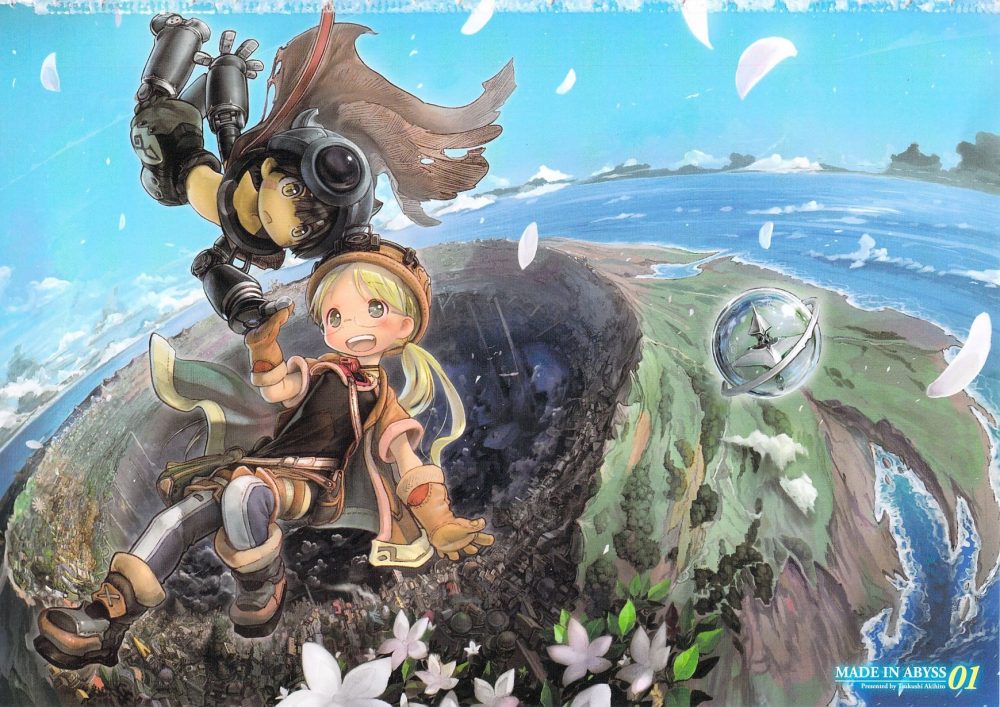
The Made in Abyss manga begins in a town called Orth, which has grown slowly at the edge of a gaping abyss (sometimes called “the netherworld”). Many who live there train and work as cave raiders who plunge the depths of the abyss for treasures and answers.
For 1900 years, adventurers and academics have been exploring the layers of the abyss, discovering impossible artefacts and meeting fantastical creatures.
The story follows Riko, daughter of a white whistle, the most advanced and experienced of cave raiders. Riko’s mother disappeared at the bottom of the abyss ten years ago. Riko herself is a young girl full of vigour, eager to follow in her mother’s footsteps.
When she meets Reg, a seemingly impossible robot boy who must have come from the depths of the abyss, she is spurred on to take fate into her own hands and dive deep into the depths with only Reg by herself.
Riko is a fantastic strong female protagonist, especially considering her age. It’s inspiring that she is following in the footsteps of her mother, but also that she is journeying out in her own way. She has her mission; she has found help; she is relying on what she has learned and studied; she knows her weaknesses as well as her strengths.
Riko is put through her paces in Made in Abyss. The world is dangerous and it does not treat her kindly. But she is fuelled by her quest, her sense of wonder, and her need to discover. She grows stronger, uses her savvy and her knowledge to overcome, and also knows the value of teamwork.
Riko is a fantastic female protagonist, measured by any metric, and placed in any medium. She’s lovable, tenacious, focussed, and smart. I adore her.
Aspira — Golden Kamuy by Satoru Noda
Golden Kamuy, or Gōruden Kamui, is a dramatic action tale set in the early 20th century on the Japanese island of Hokkaido.
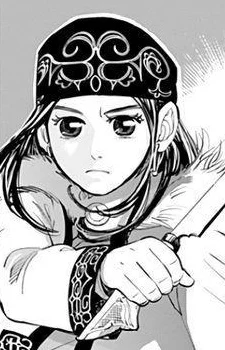
Russo-Japanese War veteran Saichi ‘Immortal’ Sugimoto teams up with a local Ainu girl, Asirpa, and an assorted group of soldiers and ex-convicts to locate a stolen hoard of Ainu gold.
Through the manga, readers learn about Hokkaido, survival techniques in the wilderness, and Ainu customs. It’s a seinen manga, aimed at an older audience, and can be violent and gory, so make sure you have a strong stomach for this one.
If you’re on the hunt for a unique adventure manga featuring eccentric characters and a tenacious, clever female protagonist with a giant Ezo Wolf as a friend, then Golden Kamuy is the manga for you. I first discovered Golden Kamuy last year when I visited the British Museum’s Manga Exhibition; Asirpa was on all the banners and posters in a stance that resonated power and determination.
Although I personally find the manga too violent (a man literally gets his face ripped off by a bear at one point), Asirpa was the reason I kept reading. Most of the recurring characters are men, but Asirpa is never overshadowed and holds her own throughout the series, constantly subverting convention with her excellent hunting abilities, survival knowledge, and fighting skills.
When she’s first introduced, she saves Sugimoto from a huge matakarip bear, establishing her strength, maturity, and intelligence from the very beginning. Asirpa also represents the beliefs and traditions of the indigenous Ainu peoples of northern Japan, educating others while still pursuing her personal truths, driven by her own self-will.
Although Sugimoto is significantly older than Asirpa, their friendship is one of trust and mutual respect, an equal partnership in their fight to reach their goals. Sugimoto recognises Asirpa as perfectly capable of taking care of herself and admires her intellect and abilities, not dismissing her as a child while not erasing it from her identity either.
She’s wise for her age, courageous, pragmatic, and possesses a deep respect for nature, and although she may appear unfeeling at times, her friendship with Sugimoto reveals her as free-spirited and cheerful. There are instances where Noda’s writing can be problematic and insensitive, but overall, the manga’s wry humour and progressive female representation makes it an enjoyable, thrilling ride for readers who can handle a bit of gore.
Shirayuki — Snow White with the Red Hair by Sorata Akizuki
Akagami no Shirayukihime, or Snow White with the Red Hair, is a progressive fairy-tale romance shoujo manga about Shirayuki, a girl born with rare red hair.
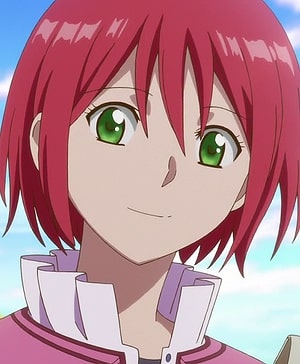
Forced out of her home kingdom, Tanburn, by a prince who wants her as his concubine, Shirayuki meets Zen Wistaria, second prince of Clarines, who she befriends after treating his wounds. After moving to Clarines and achieving a position as royal pharmacist at the palace, she trains to further her career and begins to fall in love with Zen, despite their difference in social status.
Akagami no Shirayukihime challenges the traditional passive depictions of women in both shoujo manga and fairy-tales, making it as much a story of empowerment and following your own destiny as it is about love. Shirayuki is driven by her career and desire to help people throughout the series; she doesn’t move to Clarines to have a relationship with Zen, but to chase her dream of becoming a court herbalist.
She is defiant, driven, and strong-willed, constantly standing up for what she believes is right and subverting the silent, submissive societal expectations of women. When faced with danger, she doesn’t resort to violence, but uses her wit, resourcefulness, and intelligence to find solutions and resolve disputes.
While Shirayuki holds no political power or influence, she’s empowered through her freedom to make her own choices and never abandons or compromises her own self-will for the sake of love; when she pursues love, it is because it is her decision to do so. Her relationship with Zen blooms slowly over the series and is developed from friendship and admiration for one another, breaking down class barriers and treating each other as equals.
Shirayuki fights endlessly to maintain control of her own destiny and independence, taking matters into her own hands when threatened and never relying on anyone for aid. Though she is optimistic, ambitious, and selfless, her strong dedication and prioritisation of others before herself can also be weaknesses, overworking to the point she becomes ill.
Shirayuki constantly defies conventional gender norms, solely motivated by her individual desires and dreams, and is a complex, well-written character that drives her own narrative. She is a truly inspirational character and ideal role-model for young girls, though everyone can find something to learn from her.
The manga features topics of equality, respect, and personal freedom, and incorporates a strong core message about female agency, presenting the multiple ways women can lead lives that aren’t governed by others wishes and rigorous societal standards.
If you’re in need of a whimsical, romantic, fantasy manga with an intelligent, self-willed protagonist and host of other interesting characters, then let the spellbinding Akagami No Shirayukihime whisk you away.
Written by Claudia Besant

